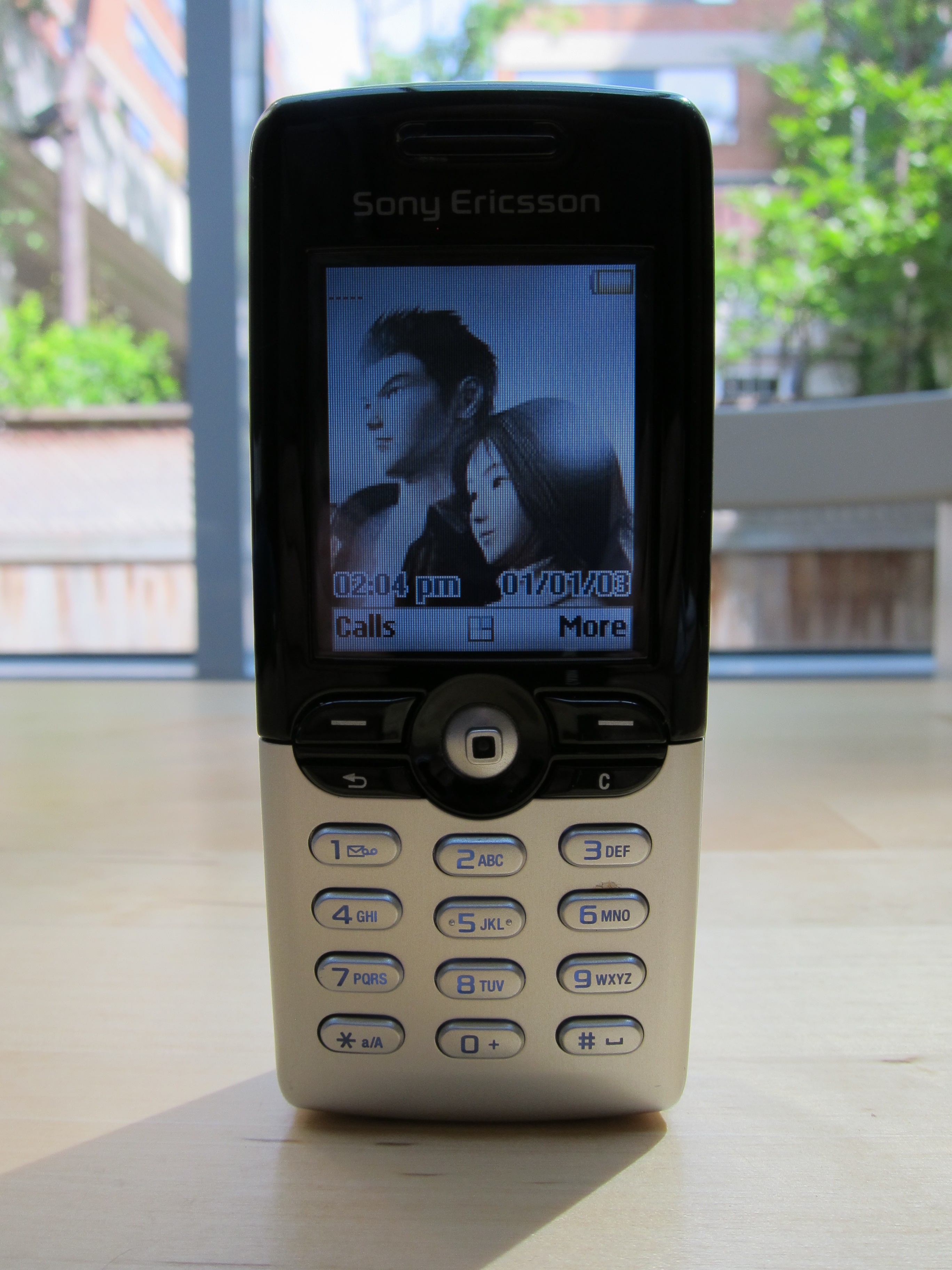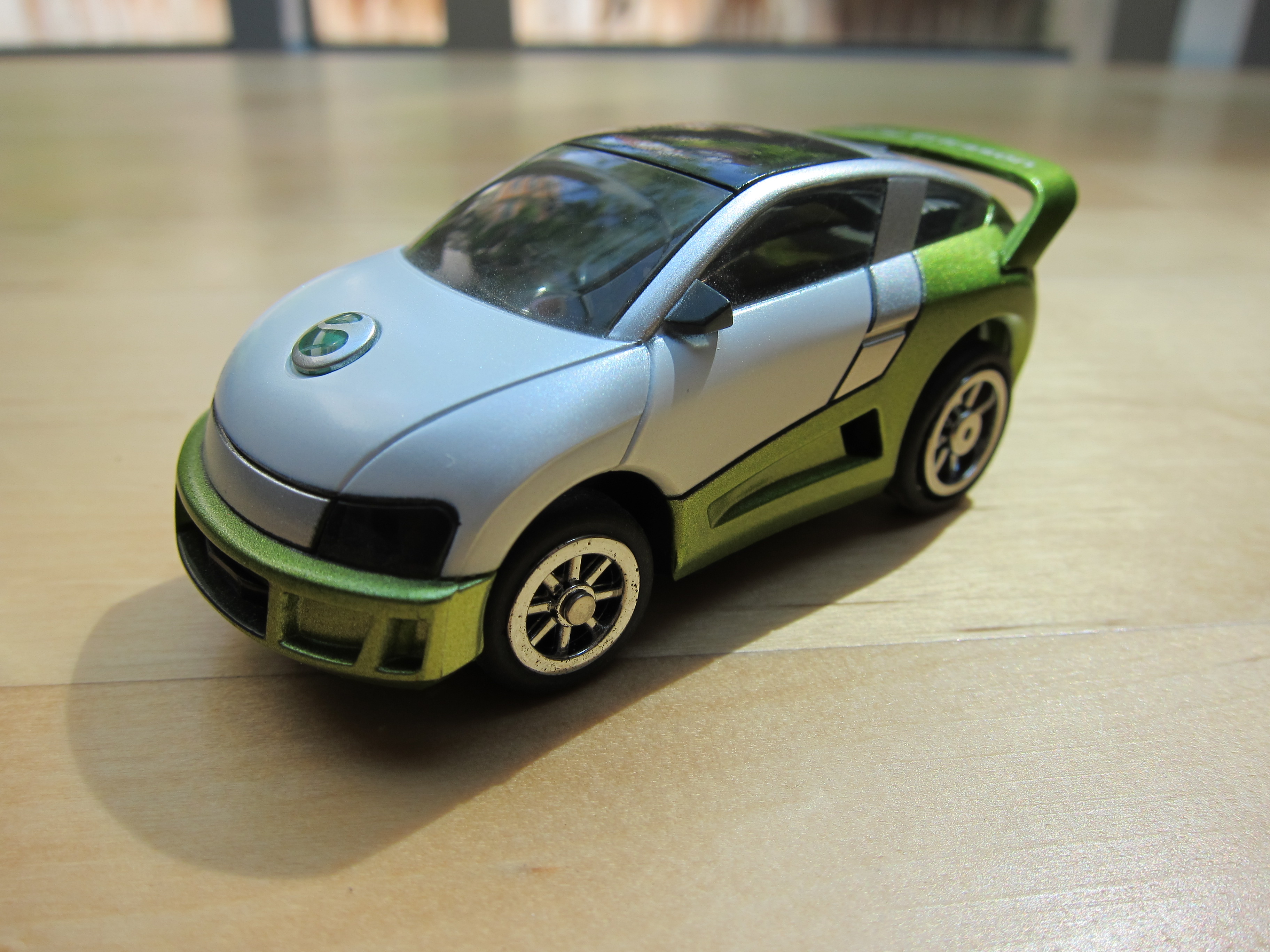Nokia smartphones of the day were powered by the Symbian operating system. The combination of the two was, for me, a culmination of every device I had owned prior. Like other Eseries devices the E61i was made for enterprise, with email support and a qwerty keypad worthy of a BlackBerry. But it also had a camera, and a not bad one at that. Like my Ericssons and Sony Ericssons the E61i supported Bluetooth and SyncML. Around this time I discovered a hosted SyncML service, so instead of shuttling my personal data back and forth to a single computer I could sync over the Internet and access it on the web, as I did with my hiptop — better, in fact, because now I could export my data at any time to standard file formats. Finally, like my TyTN the E61i had both 3G and WiFi radios — though 3G only worked in Europe and Asia. Did I mention that this device was never meant to be sold in the Americas, and was only available to Canada through an online retailer? The lack of Canada-tuned 3G turned out to be a blessing, as I was paying my carrier far too much money for not enough data. If $25/month for a paltry 3 MB seems ludicrous believe me, it was.
Because Symbian — also confusingly referred to as “S60” — was so popular in Europe, I was able to sample mobile apps for the first time. There wasn’t yet an on-device app store; you would instead visit the developer’s website and purchase the app directly from them — imagine that! The available third-party software was generally excellent. There were task managers, giving the user control over the running processes on their phone. There was the free Opera Mini web browser, critical to browsing web pages on my ridiculous data plan. There was even software that could emulate old game consoles, like Nintendo’s Gameboy Color and NES. To play my favourite childhood arcade games on my phone was, well… it was just awesome.
My E61i travelled with me far and wide. Its first test was a trip to New Zealand, where I was able to peruse the morning news over breakfast via the WiFi in my hotel. Next up was a journey to the Great Pyramids of Egypt, where I used GPS for the first time with a Bluetooth accessory. To save on roaming charges I was able to store map data directly on my phone before I left. Accessing GPS satellites was free, and as I later found out, quite illegal in Egypt when I was there. Nonetheless, I’ve a particularly fond memory of being on an overnight train to Luxor, my eyes glued to the E61i’s screen as the train pushed forth into parts unknown.
Perhaps the biggest testament to the E61i’s world-phone abilities was that it actually worked in Japan. It might not have been as svelte as the keitai there, nor could it access Japan’s i-mode services. But as a camera phone and Internet-connected device it could hold its own. You’ll remember that early on I wrote about wanting only two things from a smartphone. In 2000 my VisorPhone had granted me my first wish, an address book that could be synchronized from computer to mobile device. Now I had a handset that I could use anywhere on the planet. Checklist complete.
And then the iPhone came along and changed everything…
]]>
Here’s my S60-powered Nokia E61i, resplendent in its cheap and cheerful crystal case.
As you can see from this photo opp in front of a Fido van (for some long-since forgotten campaign) I was pretty happy with this Eseries device. In many ways it was a culmination of every smartphone I had owned prior. It was sturdy, like any other Nokia. It had a qwerty keypad worthy of a BlackBerry or hiptop. And like my TyTN it supported 3G and WiFi.
The 3G only worked in Europe and Asia, though — good thing, because Fido’s data service at the time was laughable. $10 CAD/month sounds entirely reasonable, but in 2007 it was good for a mere 12 MB of data. If that sounds bad, I was previously paying $25/month for 3 MB!
It works in Japan! Here’s a photo of the famous Shibuya Crossing, taken with the E61i’s 2 megapixel camera — not bad for a night shot with a 2007-vintage camera phone.
The E61i proved its mettle as a travel companion almost immediately on a trip to New Zealand. In addition to Tokyo it also accompanied me to such faraway places as Buenos Aires and Egypt. For the longest time I couldn’t figure out why my blog posts about the latter were getting so many hits — until I finally learned that the Bluetooth GPS accessory I had brought to Cairo with me was, in fact, illegal. Oops.
]]>And yet I used this “dumbphone” (along with two other nearly identical models) for over a year, thanks largely to a technological standard called SyncML.
If you didn’t know, SyncML stands for Synchronization Markup Language. It allows one’s personal data — calendars, contacts, to-do items and more — to be synchronized between phone and desktop computer. Now here’s the important part: Unlike Palm’s proprietary HotSync, SyncML is an open standard, so anyone can make software for it. By this time Apple’s OS X desktop had SyncML support through an app called iSync; while my T616 wasn’t fully supported from the get-go, a third-party program called PhoneAgent did everything that iSync didn’t.
I didn’t even need a data cable; Bluetooth finally proved its worth as a means to wirelessly synchronize my data and install files to my handset. And thanks to Sony Ericsson’s sizable fanbase in Asia and Europe I was able to trick out my T616 with all manner of custom ringtones and themes.
All of the above actually applies to three separate handsets — the T616, T610 and Z600. The two “Ts” were virtually indistinguishable from the outside; on the inside, the T610 had a radio with an extra European band (900MHz) while the T616 swapped that out for an extra North American band (850MHz). This was more or less irrelevant, as both handsets worked on both continents, and Fido didn’t support the 850MHz band at the time.
The Z600 shared the same camera and internals, but was a bigger flip phone with customizable front and back panels.
It’s hard to say which one I liked more; the Z600 felt like a Japanese keitai but clearly needed a protective case, while the T610 and T616 were small enough to fit into the lighter pocket of my jeans. Of course I ended up dropping two out of the three, each in a different exotic locale. I managed to dent the metal case of my T616 by sending it crashing to the hard wooden floor of a swanky Bermuda hotel, and did about as much damage to the plastic housing of my Z600 as I fumbled with it in a public washroom atop Table Mountain in Cape Town, South Africa.
I also remember these handsets for their goofy accessories. I bought a Bluetooth-controlled toy car for my T610 that my cat chased for all of thirty seconds, then never again. For the Z600 I got a snap-on game controller, which was far too ridiculous-looking to ever use in public. I still have both of them tucked away in a drawer somewhere.
Any takers?
]]>
I believe the expression “Sony guts” would apply here. Though very different on the outside, Sony Ericsson’s T610 and T616 candy bar phones share the same specs with the Z600 flip. And really, the only thing separating the T610 and T616 is the 900Mhz compatible radio in the former, and 850MHz support for the latter.
I personally owned all three. I sold my T616 but never found another home for my T610, shown above. And who’s that dashing young man I’ve got in my wallpaper? Here’s a hint.
I didn’t just trick out my T610 with wallpapers, ringtones and games… I also bought this tricked-out Bluetooth-controlled car. You could drive it via the joystick on your phone, barely. And what really sucked was that the car would only take a charge from the phone, sucking up precious battery.
Back to the phone, you can read Steve Punter’s February, 2004 review of the Fido-branded T616 here.
The strip of photos above (via this Korean blog) pretty much shows you that the Z600 was all about the changeable covers. I’ve still got a couple in my drawer, along with that game controller.
You can see MobileBurn’s gallery of the controller (and car) here, and their review of the Z600 here.
If you were wondering how photos were from either camera, well… they were exactly like this.
]]>Sony had already been making their own handsets — at least in the UK — for quite some time. Their join venture with Ericsson was inked in 2001 but the T68i, the combined companies’ first product, took almost two years to arrive in Canada. Its standout feature was an available camera accessory that plugged in to the bottom of the phone.
It was an expensive add-on that I never even bothered with; in fact, this particular phone/PDA combo lasted maybe a week before I sent both back to their respective stores. In theory, using a phone as a Bluetooth modem was a godsend. One could enjoy the mobile Internet on an expansive touch-enabled screen while the signal source was safely tucked away in a pocket. In practice, though, this setup was a pain. A constant Bluetooth connection easily halved the battery life of both devices; your only other choice was to pair and un-pair them manually throughout the day.
I vowed that I would never again separate PDA from phone, and my next device kept me to that promise…
]]>“A Bluetooth headset is a great way of letting the world know how much sex you’re not getting.” — someone on the Internet
My comedy shows in Hong Kong were a big success, even though the first one was cancelled (it was a corporate show, not part of our regular run). That cancellation gave us a full week in Hong Kong before our first gig, with nothing to do but take in the sights and shop. We soon found ourselves on the famous Nathan Road in Kowloon, where one of my fellow actors got himself fitted for not one but two custom-tailored suits. And I paid about as much for an Ericsson T39m, my second-ever unlocked phone. I also walked out with a wireless Bluetooth headset as part of the deal, but since such things have never really found favour with those who know better — “douchebag earrings”, I believe they’re called — you won’t read any more about that here. But we will return to Bluetooth in just a bit.
There was nothing particularly wrong with the Fido-branded Ericsson T28w that I’d brought with me from Canada; it was pretty much a one-trick pony, though, offering dual band “world” service and not much else. But the T39m was a different story. Its killer feature was a GPRS data radio, allowing it to connect to the Internet at will, rather than locking down the phone entirely by making a data call via circuit switched data. The difference was akin to a dial-up versus broadband Internet connection on a home computer.
Sadly, like other Ericssons before it the T39m was cursed with a tiny screen, so browsing WAP pages on it was quite pointless. Thus, upon my return to Canada the Ericsson T28w went back to Fido and my T39m went into storage — that is, until the following April (2002), when I became aware of a Bluetooth module for my Handspring Visor. Like infrared, Bluetooth allowed for a connection without wires; unlike infrared Bluetooth was a lot faster and didn’t require line-of-sight for transmission.
Two hundred bucks later I was dismayed to find that the only task this Bluetooth module could accomplish was dial my phone from my PDA. Shortly thereafter the Bluetooth, then cellular radio died entirely. The only explanation I could surmise was that my T39m was made for developing markets, and was not up to the same build standard expected for the west, or even Hong Kong. To put it another way, I was scammed.
But if it sounds like my imported Ericsson was a waste of time it honestly wasn’t. This wouldn’t be the last Ericsson I’d ever own; the Saturday night Hong Kong movies on a local Chinese television station taught me that Ericsson was the brand of choice for discerning mobsters. And the experience of buying mine overseas showed me the freedom that could be gained in using unlocked devices, along with the perils of buying them from sketchy vendors.
]]>



